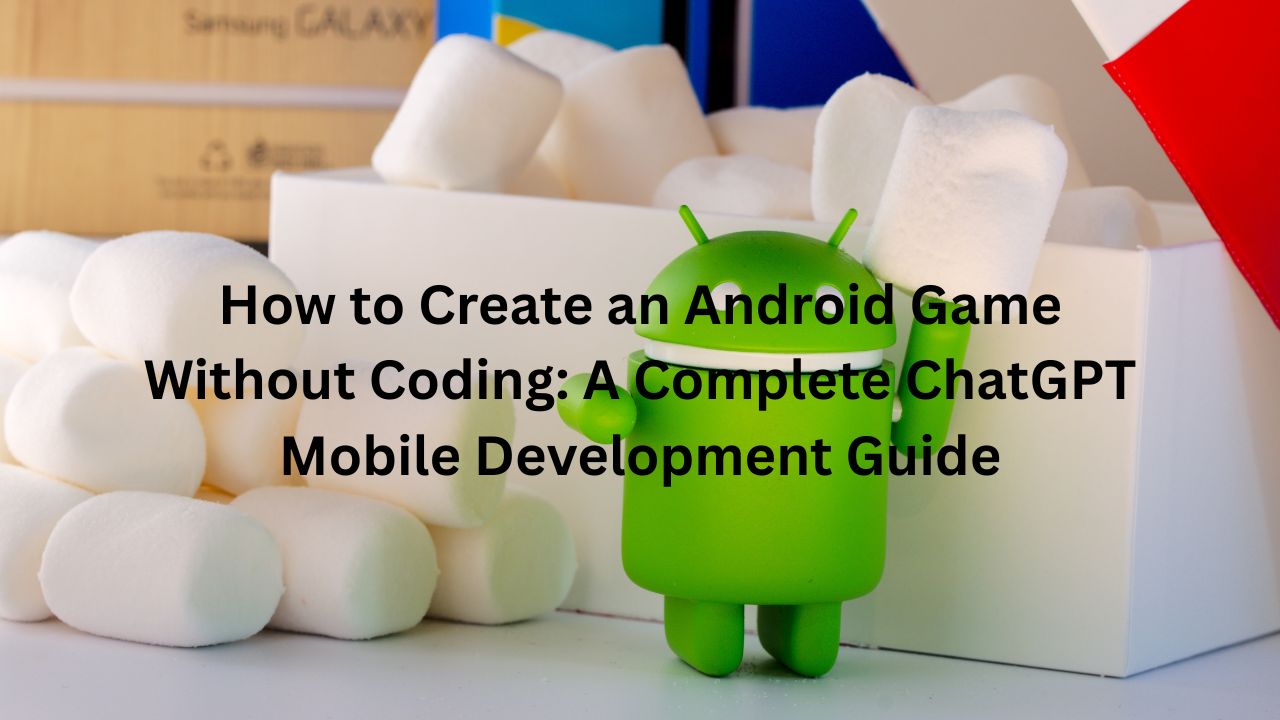Imagine building a mobile app that generates millions in revenue, even without extensive coding knowledge. It’s not a pipe dream. People are already achieving incredible results, with some apps hitting $2 million per month, others reaching $80,000 monthly, and one even soaring to $10,000 MRR in just 72 hours. The secret? Leveraging the power of AI and no-code development.
This guide is designed for entrepreneurs, developers, and anyone interested in tapping into the burgeoning market of AI-powered mobile applications. We’ll explore the fundamental concepts, actionable strategies, and essential tools needed to create and monetize your own AI mobile app, even if you have limited technical expertise. In fact, one member of David Ondrej’s community recently sold the MVP of their AI app for $90,000, proving the real-world potential of this approach.

Understanding AI Mobile App Development Fundamentals
The world of mobile app development is rapidly evolving, and AI is at the forefront of this transformation. No-code platforms are making it easier than ever to bring your app ideas to life, but understanding the underlying principles is crucial for success.
The Evolution of No-Code Mobile Development
Traditional mobile app development often requires extensive coding skills, making it inaccessible to many. However, AI-powered no-code platforms are changing the game. These platforms allow you to build functional and engaging mobile apps using intuitive interfaces and AI assistance. Tools like ROR.app, highlighted in the video, are specifically designed for mobile app creation, offering a streamlined approach to development.
It’s important to acknowledge that mobile app development, even with no-code tools, can be more complex than web app development. The mobile landscape presents unique challenges related to device compatibility, operating system variations, and app store guidelines. However, the potential rewards are significant.
Current Market Opportunities
The market for AI mobile apps is ripe with opportunity. Consumers are increasingly seeking personalized and intelligent mobile experiences. From AI-powered workout trackers to language learning apps, the possibilities are endless. By identifying unmet needs and leveraging AI to provide innovative solutions, you can carve out a profitable niche in this dynamic market.
Essential Steps to Building an AI Mobile App
Building a successful AI mobile app requires a strategic approach that encompasses ideation, development, and testing.
Ideation and Problem-Solving
The most common mistake aspiring app developers make is focusing on a solution before identifying a real problem. Instead of starting with a cool idea, begin by identifying a problem that people are willing to pay to solve.
- Finding Problems vs. Creating Solutions: Look for pain points in your everyday life or within specific industries. What tasks are time-consuming, inefficient, or frustrating?
- Market Research Importance: Validate your problem by conducting market research. Are others experiencing the same issue? Are there existing solutions, and if so, how can you improve upon them?
- Validation Strategies: Talk to potential users, create surveys, and analyze online forums to gauge interest in your proposed solution.
As an example, the video highlights a workout tracker app combined with elements of a language learning app like Duolingo. This concept addresses the problem of maintaining motivation and consistency in fitness routines by incorporating gamification and personalized feedback.
Development Strategy
Once you’ve identified a problem and validated your solution, it’s time to start building your app.
- Breaking Down Development into Stages: Instead of attempting to build the entire app at once, break it down into smaller, manageable stages. This approach makes the development process less overwhelming and allows you to iterate more quickly.
- Prompt Engineering for AI Tools: When working with AI-powered no-code platforms, the quality of your prompts directly impacts the results. Be clear, concise, and specific in your instructions.
- Testing and Iteration Process: Regularly test your app on different devices and gather user feedback. Use this information to identify bugs, improve the user interface, and refine your app’s functionality.
- Real-Time Phone Testing Capabilities: Take advantage of features that allow for real-time testing on your phone. This enables you to experience your app as a user would and identify any issues that may not be apparent on a computer screen.
Common Mistakes and How to Avoid Them
Navigating the world of AI mobile app development can be challenging, and it’s easy to fall into common traps. Here’s how to avoid them:
The Perfectionism Trap
Perfectionism can be a major roadblock to launching your app. It’s tempting to keep adding features and polishing the design, but this can lead to endless delays and ultimately prevent you from ever releasing your app.
- Why Perfect is the Enemy of Good: Striving for perfection can paralyze you and prevent you from getting your app into the hands of users.
- MVP Development Timeline (30-Day Rule): Set a hard deadline for your MVP (Minimum Viable Product). The video suggests aiming for a 30-day timeframe.
- Release Strategy: Once your MVP is functional and addresses the core problem, release it to the market.
- Iteration Based on User Feedback: Use user feedback to guide your future development efforts. Focus on addressing the most pressing issues and adding features that users actually want.
Solution-First Thinking
As mentioned earlier, starting with a solution before identifying a problem is a recipe for disaster.
- Problem-First Approach: Always begin by identifying a real problem that people are willing to pay to solve.
- Market Validation: Validate your problem and solution through market research and user feedback.
- User Feedback Integration: Continuously gather and incorporate user feedback to ensure that your app meets their needs.
- Revenue Potential Analysis: Before investing significant time and resources, analyze the revenue potential of your app. Is there a large enough market to support your business?
Technical Implementation Guide
Let’s dive into the practical aspects of building an AI mobile app using no-code tools.
Working with AI Tools
Platforms like ROR.app simplify the development process, but understanding how to effectively use these tools is essential.
- ROR.app Setup and Usage: Familiarize yourself with the platform’s interface and features. Experiment with different prompts and settings to understand how they impact the app’s functionality.
- Handling Common Errors: Errors are inevitable, especially when working with cutting-edge AI tools. Don’t be discouraged by errors; instead, view them as learning opportunities.
- Testing on Physical Devices: Always test your app on physical devices to ensure that it functions correctly and provides a seamless user experience.
- UI/UX Considerations: Pay attention to the user interface and user experience. A well-designed app is more likely to attract and retain users.
Feature Implementation
Implementing key features is crucial for providing value to your users.
- Core Functionality Development: Focus on building the core functionality of your app first. This ensures that the app addresses the primary problem it’s designed to solve.
- User Interface Design: Design a user-friendly interface that is intuitive and visually appealing.
- Data Management: Implement a robust data management system to store and retrieve user data securely.
- Performance Optimization: Optimize your app’s performance to ensure that it runs smoothly and efficiently on different devices.
Monetization and Growth Strategies
Building a great app is only half the battle. You also need to develop a strategy for monetizing and growing your user base.
Revenue Models
There are several ways to monetize your AI mobile app.
- Subscription Pricing Strategies: Consider offering a subscription-based model, where users pay a recurring fee for access to your app’s features.
- Example Pricing Points ($5-7/month): Research industry benchmarks and competitor pricing to determine an appropriate price point. The video suggests a price range of $5-7 per month for a workout tracking app.
- Market Positioning: Position your app in the market based on its unique value proposition and target audience.
- User Acquisition Strategies: Implement a user acquisition strategy that includes marketing, advertising, and app store optimization (ASO).
Scaling Your App
Once you’ve established a revenue stream, it’s time to focus on scaling your app.
- Marketing Strategies: Utilize a variety of marketing channels to reach your target audience, including social media, content marketing, and paid advertising.
- User Retention Techniques: Implement strategies to retain users, such as personalized notifications, in-app rewards, and regular feature updates.
- Feature Expansion: Continuously expand your app’s features based on user feedback and market trends.
- Performance Monitoring: Monitor your app’s performance to identify areas for improvement and ensure that it continues to meet user expectations.
Future-Proofing Your App
The AI landscape is constantly evolving, so it’s important to future-proof your app by staying abreast of emerging trends.
Emerging Trends
- AI Integration Opportunities: Explore new ways to integrate AI into your app to provide even more value to your users.
- Market Evolution: Monitor the market for new trends and opportunities.
- Technology Advancement: Stay up-to-date on the latest technological advancements in AI and mobile app development.
- Competition Analysis: Continuously analyze your competition to identify their strengths and weaknesses and differentiate your app.
Read Also: 7 AI SEO Cheat Codes: How to 10x Your Website Traffic Using SearchAtlas and Modern AI Tools
Case Studies and Success Stories
Learning from the success of others can provide valuable insights and inspiration.
- $90,000 MVP Sale Example: The video mentions a member who sold their AI app MVP for $90,000, demonstrating the potential for significant returns.
- Various Revenue Achievements: Highlight apps that have achieved significant revenue milestones, such as $2 million per month or $10,000 MRR in 72 hours.
- Learning from Successful Implementations: Analyze successful AI mobile apps to identify the key factors that contributed to their success.
- Real-World Applications: Showcase real-world applications of AI mobile apps in various industries.
Conclusion
Building a profitable AI mobile app is within reach, even if you don’t have extensive coding experience. By focusing on solving real problems, leveraging the power of no-code tools, and continuously iterating based on user feedback, you can create an app that generates significant revenue.
Here are the key takeaways from this guide:
- Start with a problem, not a solution.
- Break down development into manageable stages.
- Don’t be afraid to release an imperfect MVP.
- Continuously gather and incorporate user feedback.
- Stay up-to-date on emerging trends in AI and mobile app development.
Take action today by identifying a problem, exploring no-code AI platforms like ROR.app, and starting to build your own AI mobile app. The potential rewards are well worth the effort.



